
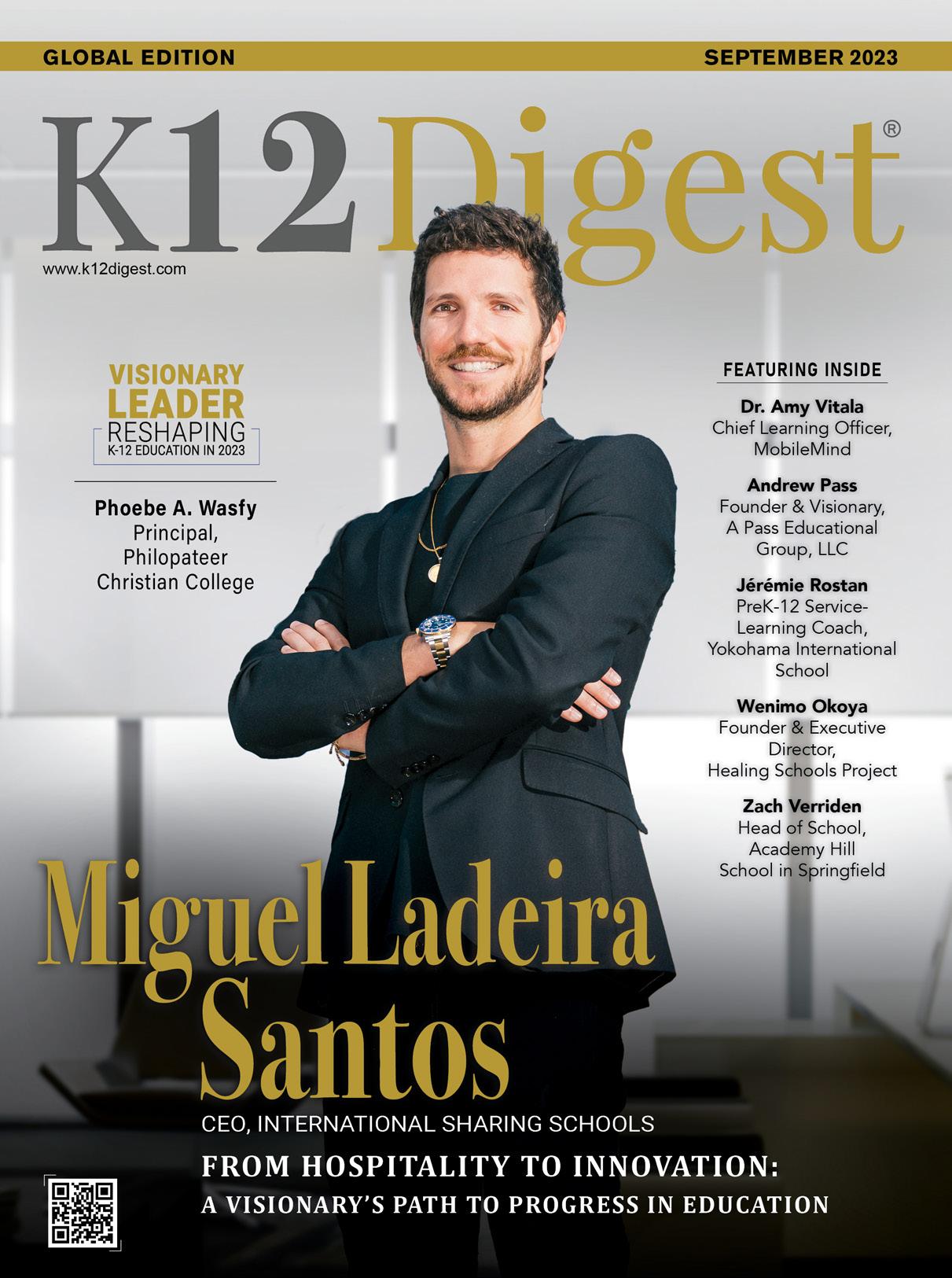


Visionary Leader Reshaping K-12 Education in 2023
Managing Editor
Sarath Shyam
Consultant Editors
Dr. John Andrews
Emma James
Andrew Scott
Naomi Wilson
Stanly Lui
Joseph Alex
Art & Design
Charlie Jameson
Jennifer Anderson
Alice Smith
Monica Davis
Anna Elza
Sales & Marketing Enquiry admin@K12digest.com


International Representation
Americas
16192 Coastal Highway, Lewes, DE 19958, USA
Europe
27, Old Gloucester Street, London, WC1N 3AX, UK
Middle East & Africa
P.O. Box 48299, Dubai Silicon Oasis, Dubai, UAE
Asia-Pacific
Ramanashree Arcade, 18 MG Road, Bangalore – 560001, India
K12 Digest is a digital magazine published by Connecta Innovation Private Limited. All rights reserved. The opinions expressed in the content and pictures provided are those of the authors. They do not purport to reflect the opinions or views of the Connecta Innovation Private Limited or any of its members and we do not assume any responsibility. The publisher does not assume any responsibility for the advertisements, its content, pictures, and all representation of warranties made in such advertisements are those of the advertisers and not of the publisher. K12 Digest is a Free Subscription digital magazine strictly not for sale and has to be strictly for internal private use only. Publisher does not assume any responsibility arising out of anyone printing copy of this digital magazine in any format and in any country and all matters related to that.


K12 Digest September 2023 4
Free Subscription September 2023 Vol - 4 Issue - 10
SEPTEMBER 2023
Reshaping Educational Landscape for the Better

In the constantly changing world of education, visionary leadership serves as a beacon of hope, leading us towards a better tomorrow. It’s widely known that K-12 education plays a crucial role in the progress of any society. The leaders who influence this sphere have the ability to shape not only the young minds but also the very essence of our future world.
In this special issue of K12 Magazine, we delve deep into the heart of visionary leadership within the realm of K-12 education. We do so with a sense of purpose, for we believe that the impact of visionary leaders cannot be overstated. They are the architects of innovative strategies, the champions of inclusivity, and the catalysts for transformation.
You may be wondering why we have devoted an entire issue to this particular subject. The reason is both straightforward and significant. The world is experiencing a rate of change that is unparalleled in history, and our education systems must evolve accordingly. In order to accomplish this, it is important to recognize and highlight the innovators, visionaries, and achievers who are leading the way towards a more promising and fair educational future.
Throughout these pages, you will discover stories of leaders who have not only embraced change but have also led it. They have harnessed technology to bridge gaps in learning, championed diversity and inclusion, and fostered creativity and critical thinking in young minds. In these stories, we find inspiration, ideas, and a blueprint for the future.
On the cover, we feature Miguel Ladeira Santos, the visionary CEO behind International Sharing Schools (ISS). Under his leadership, the schools have grown to include 1,000 students and 250 staff.
As we navigate the complex terrain of K-12 education in 2023 and beyond, it’s these visionary leaders who provide the roadmap. They illuminate the path forward, demonstrating that innovation, compassion, and unwavering dedication can reshape our educational landscape for the better. Enjoy Reading.
Sarath Shyam
K12 Digest September 2023 5
MANAGING EDITOR’S NOTE
Former International School Principal, Former Group Project Director at a World Class Learning Group, Education Consultant - Wright Solutions, United Kingdom

INTERNATIONAL ADVISORY BOARD
Founder & CEO - Paths to Math Ltd, Former Mathematics Teacher and Principal, Global Teacher Prize Finalist, Finland

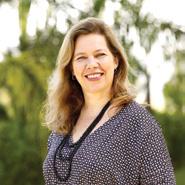


Principal, Rundle College, South Africa
Asst. Prof. Dr. Poonsri Vate-U-Lan

Chief Education Officer, New Nordic School, Finland
Exceptional Educator from Serbia, Founder of Association of the Best Teachers of the Former Yugoslavia, Founder of Magical Intercultural Friendship Network, Founder of Creative Magic - Children’s International Festival, Founder of Magic Village, Serbia
Assistant Professor in Education, Ph.D. Supervisor and Researcher, Thailand
Senior Educationist, Author, Keynote Speaker, Co-founderTríade Educacional, Brazil
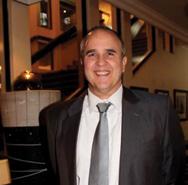

Palmans
Former Director School Administration & Business Operations (Large Education Group), Chief Operating Officer - BBD Education, Netherlands & UAE
Chief of Digital Learning and Development, Norwalk Public Schools, Connecticut, United States
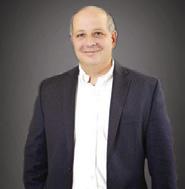
Senior Teacher‘Pashko Vasa’ school Shkodra, Exceptional Volunteer, Albania
English and Literature teacher, Owner of “The Smart Teens Studio of English” in Belgorod, Russia

Former Program Director, MS in Management Program, GSATM - AU, Thailand & India
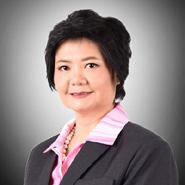

Founder & National President - ATAST, General director of IFEST² the international projects competition in Tunisia, General secretary of MILSET Africa, BRISECC member, Tunisia

K12 Digest September 2023 6
Stephen Cox
Chris Wright
Dr. Lilian Bacich
Zeljana Radojicic Lukic
Dr. Stuart Grant Colesky
Liljana Luani
Ralph Valenzisi
Maarit Rossi
Elena Shramkova
Hatem Slimane
Servatius (Servee)
Dr. Varughese K.John, PhD
Global Teacher Prize Finalist 2019, 15 International Awards on STEM, STEM Instructor, Educator, Neuroscience Researcher, Trainer & Author, Greece
Dr. Venus M. Alboruto Kihyun Park
Master Teacher, Researcher, Innovator, Trainer, Philippines
Deputy Head and Dean of Faculty, Dalton Academy, Beijing, China
Shady Elkassas
Director of Innovation

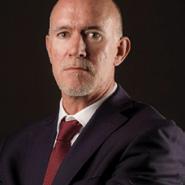
Al Ittihad National Private School-Al Ain, United Arab Emirates
Former Vice President Security (Large Education Group), Former British Army Officer (Airborne Forces), Senior Advisor – Resilience and Crisis Management (Emerald Solutions Group), United Kingdom & UAE
Innovative English and ICT Teacher, Author, Japan
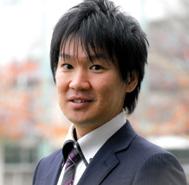
Innovative Educator of Online Classroom, Pungsaeng Middle School, South Korea

Master Teacher, Speaker and Researcher, Philippines


Revolutionary English Educator, Globally Connected English Studio - Hanoi, Vietnam
EdTech Specialist, Speaker and Teacher Trainer, Innovative ICT Educator, ICT learning multimedia developer, Indonesia
Distinguished Senior EFL Teacher, ISA Coordinator with the British Council, Motivational Speaker, Tunisia

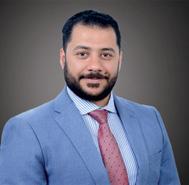

Juan Manuel Pico Co-founder & Managing Partner, Education Soul, Colombia

Mr. Ngô Thành Nam


Technology Academy Manager, Microsoft Learning Consultant, Global Trainer, Vietnam
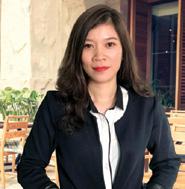
Dr. Manoj Varghese, Ph.D
Senior Director - Global Partnerships, Advisory & Consulting - Connecta®, Adjunct Faculty - Assumption University, Former Global Director Technology & Risk Management - GEMS Education, Former CIO - Athena Education.

Digest September 2023 7
Rania Lampou
Dr. Leonilo Basas Capulso
Angus Duthie
Herwin Hamid
Ian Deakin
Ha Nga
Hidekazu Shoto
Fethy Letaief
Miguel Ladeira Santos

CEO, INTERNATIONAL SHARING SCHOOLS
FROM HOSPITALITY TO INNOVATION: A VISIONARY’S PATH TO PROGRESS IN EDUCATION
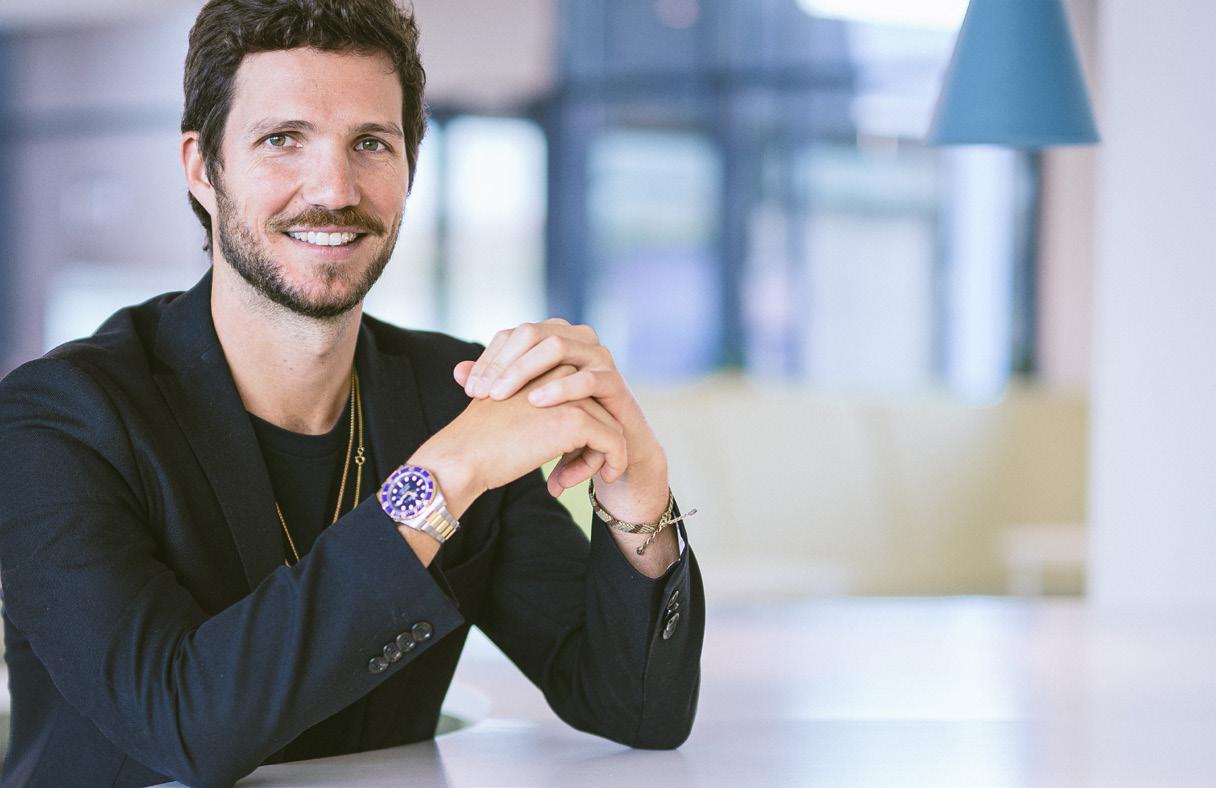
30
PHOEBE A. WASFY

PRINCIPAL, PHILOPATEER
CHRISTIAN COLLEGE
Nurturing the Next Generation of Leaders
K12 Digest September 2023 8 COVER STORY CONTENTS
12
BEST PRACTISES
LET’S DO LUNCH: BREAKING BREAD FOR BELONGINGNESS

“SCHOOL CLIMATE”: WHAT IT IS, AND WHY IT MATTERS
Service-Learning Coach, Yokohama International School
ACADEMIC VIEWS

K12 Digest September 2023 9
24
Zach Verriden, Head of School, Academy Hill School in Springfield
Jérémie Rostan, PreK-12
46
INDUSTRY PERSPECTIVE THE PERSONAL LEARNING DEVICE OF THE FUTURE

HOW SCHOOLS CAN PRIORITIZE THE MENTAL HEALTH OF TEACHERS OF COLOR


K12 Digest September 2023 10
CONTENTS
Andrew Pass, Founder & Visionary, A Pass Educational Group, LLC
50
RETAINING OUR NEW EDUCATORS: 7 QUESTIONS TO CONSIDER
40
Dr. Amy Vitala, Chief Learning Officer, MobileMind
54
Wenimo Okoya, Founder & Executive Director, Healing Schools Project

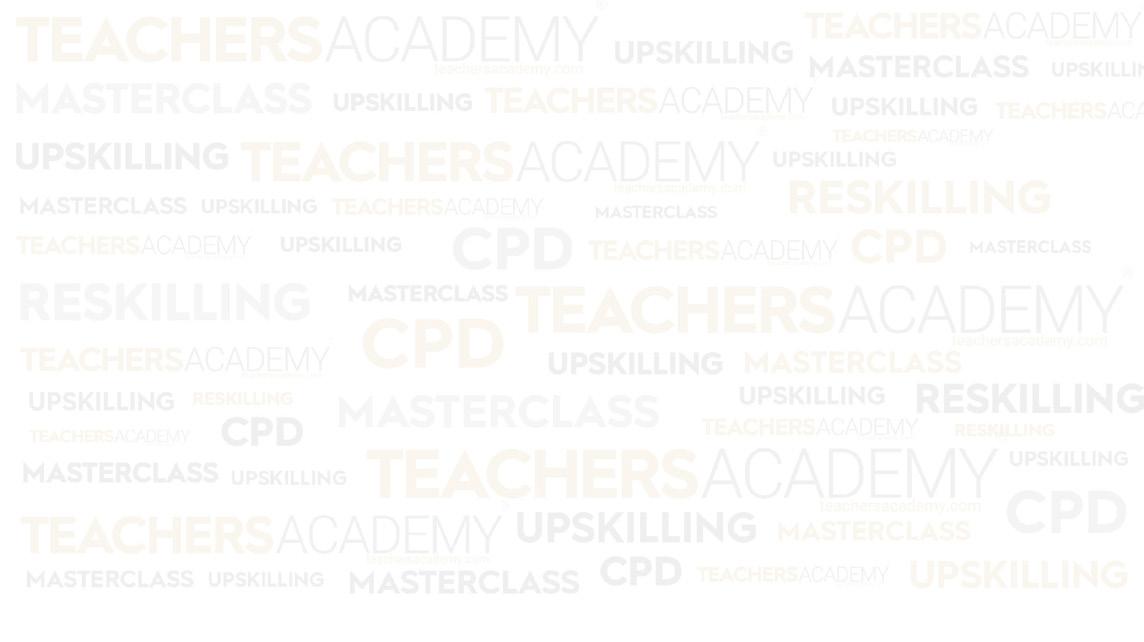

Amazing Opportunity for Teachers and School Leaders to enhance their knowledge through FREE Teachers Academy masterclasses from international education experts !!! For more details and registration www.teachersacademy.com
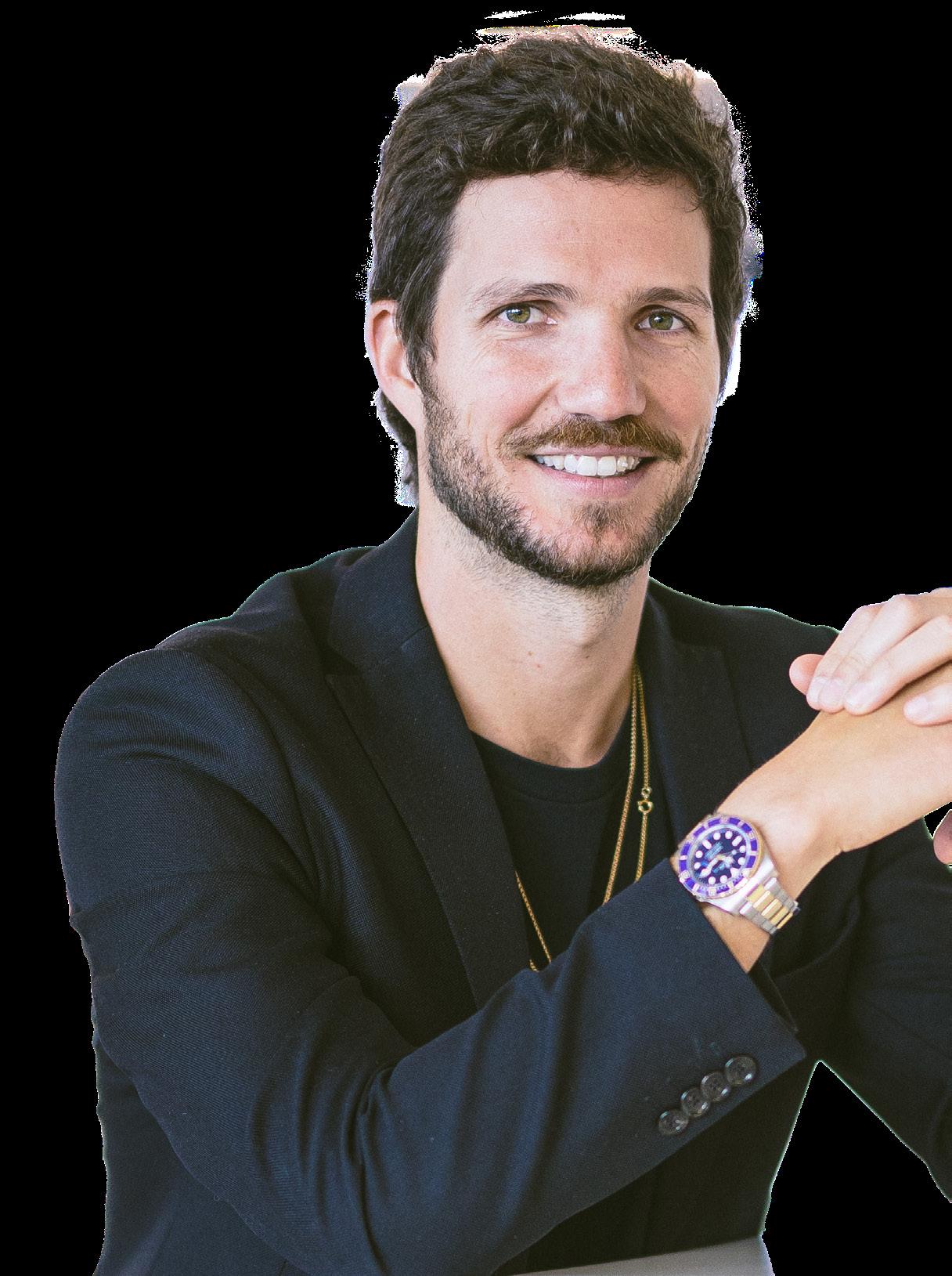
Miguel Ladeira Santos
CEO, INTERNATIONAL SHARING SCHOOLS
FROM HOSPITALITY TO INNOVATION: A VISIONARY’S PATH TO PROGRESS IN EDUCATION


COVER STORY
In the ever-changing field of education, Miguel Ladeira Santos stands out for his unique approach. The visionary CEO behind International Sharing Schools (ISS), Miguel’s path to education wasn’t a straightforward one. He first made a name for himself in luxury hospitality, owning multiple hotel operations along the way. However, fate had other plans for him. He ended up working with his family at a small international school on Madeira Island, Portugal. “Life is full of surprises,” Miguel
reflects, “and sometimes, the unexpected turns lead to the most rewarding adventures.”
The inception of International Sharing School - Oeiras in 2018 marked a significant milestone. As Miguel assumed the role of CEO, ISS’s journey began, encompassing ISS Madeira and ISS Oeiras. What sets ISS apart, according to Miguel, is its community-driven philosophy. “We’ve grown to include 1000 students and 250 staff, but at heart, we’re still a tight-knit family,” he proudly states.

K12 Digest September 2023 14
Miguel’s unique perspective on hospitality adds a distinctive touch to education. He believes that hospitality goes beyond hotel walls; it’s about welcoming, connecting, and leaving indelible memories
Miguel’s vision for education transcends traditional boundaries. His mission took him to the heart of Africa, where he spearheaded the opening of four schools, each a testament to his dedication to innovation. “Education is about kindling curiosity and creativity,” he emphasizes. “We wanted to create a model that nurtures not only knowledge but also the love of learning itself.”
Miguel’s unique perspective on hospitality adds a distinctive touch to education. He believes that hospitality goes beyond hotel walls; it’s about welcoming, connecting, and leaving indelible memories. At ISS, this philosophy takes root in the form of an inclusive and warm community. “Our school isn’t just a place of learning; it’s a place of belonging,” Miguel asserts.
Classrooms at ISS defy conventional norms. They are open, collaborative spaces designed to ignite curiosity and foster teamwork. “We’re creating an environment where learning is an adventure,” Miguel shares. “We want students to explore, ask questions, and shape their understanding of the world.”

K12 Digest September 2023 15
A Space for Collaboration and Inquiry
A school’s physical space can be a powerful tool for fostering learning, and at International Sharing Schools (ISS), the innovative approach to space planning reflects this belief. Instead of retrofitting classrooms to fit curriculum constraints, ISS boldly designed its buildings around the International Baccalaureate (IB) curriculum. Miguel shares, “Our mission was clear: create spaces that mirror the natural impulse of humans to collaborate, work together, and socialize while sharing diverse experiences.”
The ISS campus showcases this philosophy, featuring different types of learning spaces. Some areas are tailored for collaborative endeavors, while others offer solitude and focus. Each space boasts distinct seating arrangements, materials, and

K12 Digest September 2023 16
A school’s physical space can be a powerful tool for fostering learning, and at International Sharing Schools (ISS), the innovative approach to space planning reflects this belief
ergonomic designs, all carefully crafted to respect individuality and cater to students’ unique needs. The result? An educational environment that goes beyond just an inquiry-based curriculum; it’s an inquiry-based school.
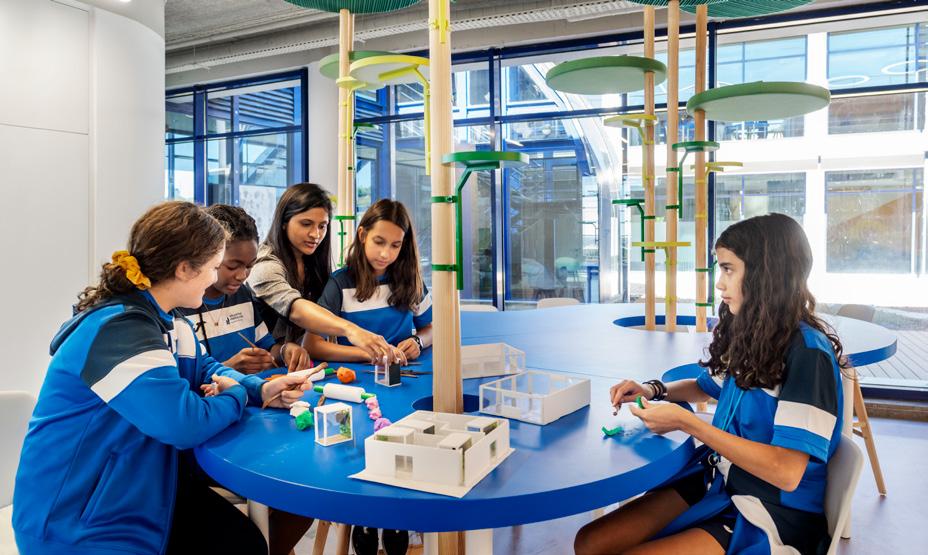
In 2019, ISS embarked on a monumental transformation journey. They acquired an old 7,000-square-meter microchip factory and, in a remarkable feat, refurbished the entire facility into a cutting-edge learning haven within just three months. Miguel recalls it as a sprint and a monumental achievement, marking a pivotal milestone in implementing their innovative learning and working methods. The transformed space solidified ISS’s standing as one of the world’s most forward-thinking schools.
Today, both ISS buildings have shed the traditional school appearance, resembling more of a Google office. Their Oeiras campus has grown to accommodate 700 students, a significant

K12 Digest September 2023 17
achievement as they enter their fifth year in the Lisbon area. Miguel emphasizes, “Expanding our community isn’t just a business goal; it’s integral to realizing the full potential of our educational model. A larger community allows us to broaden our offerings, leverage our team’s expertise, and ultimately benefit everyone involved.”
ISS recently forged a significant partnership with Dukes Education Group, underscoring the high value of their educational project and their effective leadership over the past five years. This partnership not only validates ISS’s commitment to excellence but also opens doors to new opportunities and resources that will
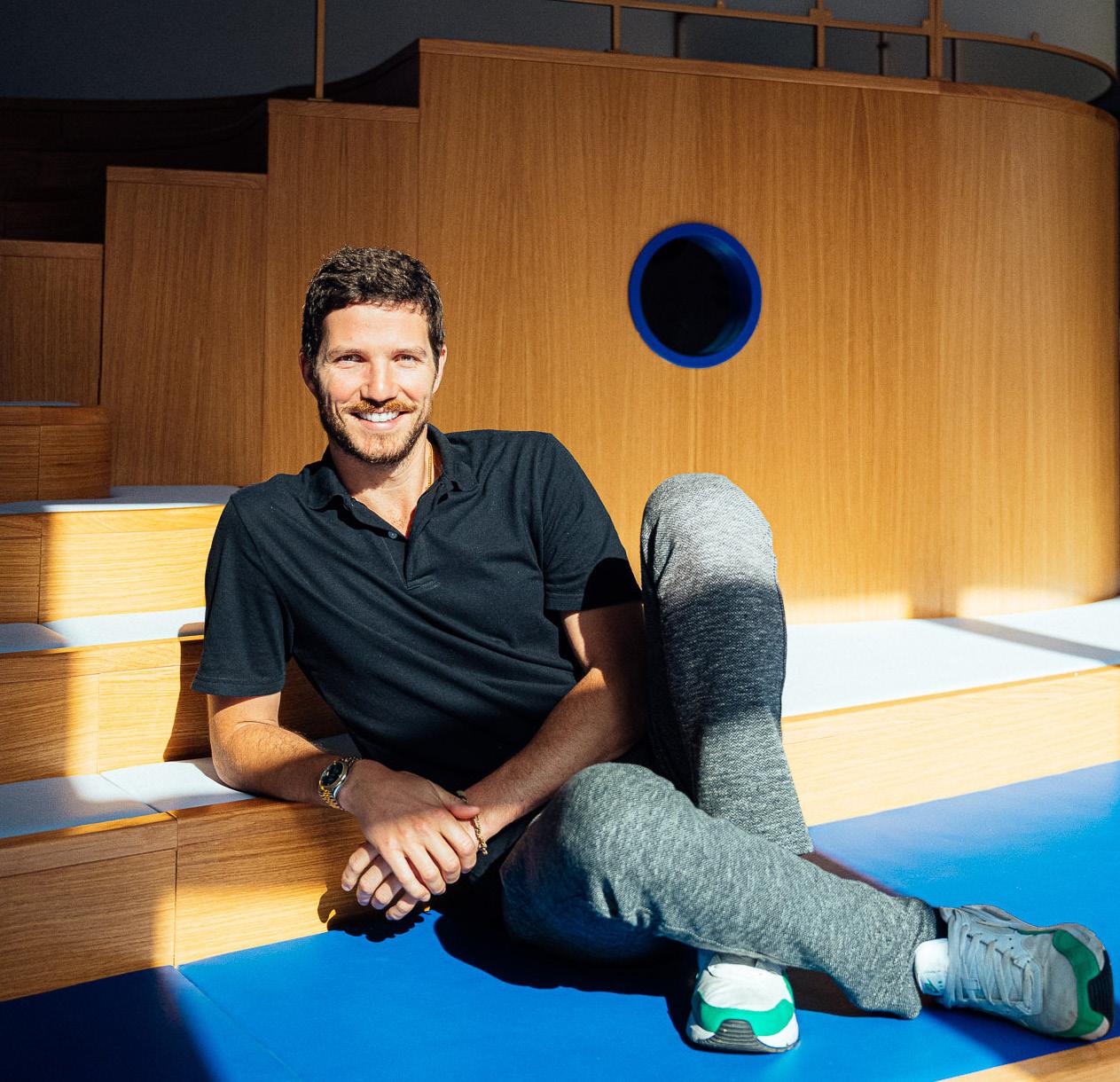
K12 Digest September 2023 18
further enrich the educational experience for students and teachers alike.
Building a Unique Community
At the core of International Sharing Schools (ISS) beats a unique and vibrant community spirit that has been instrumental in their growth. Miguel
emphasizes, “Being intimately connected with our community is the essence of our mission. By collaborating and understanding their needs, fears, and concerns, we can better serve them.” It’s this commitment to the community that has not only propelled their growth but also nurtured the wellbeing of everyone within the school.
One of the pillars of ISS is its robust service culture, centered on delivering the best educational experience to the community. Miguel states, “Our service culture isn’t just about growth; it’s about the overall well-being of our school community. This is something we take immense pride in.”
The magic of ISS extends beyond the classroom. Students have had the opportunity to stay in the group-owned hotels during school trips, providing a unique perspective on hospitality. Additionally, after-school activities take place in Miguel’s own Padel Venue, fostering a holistic learning experience.
The harmony between ISS’s various activities is striking. Miguel points out, “Our investments outside of ISS always align with our school’s spirit and leadership ethos: sustainability and a humancentered focus on the well-being of our team and the enjoyment of our customers.” Whether it’s programs in photography, image and video editing, or media investments, there’s always a thread that ties back to their core values.
Expanding Horizons and Innovating Continuously
International Sharing Schools (ISS) is not just a school; it’s a living, breathing educational project. Miguel shares, “We see ISS as a project, one that will never truly be finished. It’s a dynamic experiment in learning and working, an evolving laboratory where we’re constantly exploring new ways to enhance the educational experience.”
K12 Digest September 2023 19
At the core of International Sharing Schools (ISS) beats a unique and vibrant community spirit that has been instrumental in their growth
The future of ISS involves significant expansion. In Madeira, they’re creating new facilities to extend their unique educational model, while in Oeiras, where they have 140,000 square meters of land, substantial investments are being made to further develop their existing facilities. These spaces serve as the canvas for their ever-evolving approach to education. Miguel states, “Our commitment is to keep growing and evolving. We want to offer the best educational experience to our students.”
ISS’s educational model is a trailblazer, producing positive results. But Miguel emphasizes that it’s a work in progress. “Each term, we introduce something new based on our observations, experiences, and data analysis. We believe that there’s always room for improvement to better serve our students, teachers, and families.” This commitment to adaptation and growth is at the core of ISS’s success.
The future of ISS is filled with promise. They’ve acquired a historic building in the heart of Funchal, Madeira, which will soon transform into a stateof-the-art school, aligning with their mission and vision. Additionally, new construction projects are in the pipeline, expanding their footprint. Miguel reflects, “Our expansion isn’t just about physical space; it’s about expanding our vision of what education can be.”
A Focus on Extracurricular Enrichment
Extracurricular activities are a priority for ISS. They’ve invested significantly in sports, building three brand-new sports fields and state-of-the-art music studios. International trips are planned, not just for sports teams but also for Model United Nations events. Music Academy performances are on the agenda, showcasing student talent.

Miguel underlines, “These experiences outside the classroom are vital for holistic development.”
With their new sports facilities, ISS aims not only to provide top-notch conditions for their teams but also to host tournaments for other schools. Miguel states, “We want to share our unique sense of hospitality, our multicultural environment, and our nurturing atmosphere with others.” It’s a reflection of ISS’s commitment to community and collaboration.
K12 Digest September 2023 20
The future of ISS is filled with promise. They’ve acquired a historic building in the heart of Funchal, Madeira, which will soon transform into a state-of-the-art school, aligning with their mission and vision

K12 Digest September 2023 21
A Vision for Progress
In the dynamic landscape of education, it’s imperative to have a clear mission and vision for educational projects. Miguel emphasizes, “There are various paths to evolution, and it’s crucial to understand that just because other schools follow a particular route, it doesn’t mean we should blindly follow. True innovation in education isn’t merely about adopting technology; it’s about changing the very essence of how we learn and work.”
Miguel believes that technology is a tool, not the endpoint of innovation. “Using technology efficiently is a given in today’s world,” he notes. “The real innovation lies in reshaping the way students and teachers collaborate, understanding each individual’s unique preferences and needs, and encouraging diverse solutions. It’s about nurturing data analysis and critical thinking skills to make informed, conscious decisions.”
Advice for Aspiring Visionaries

For those embarking on their own projects, Miguel offers valuable advice. “Believe in your vision and work tirelessly to bring it to life,” he says. “But also, be open to the idea that your vision and mission may evolve over time. Adaptation is a natural part of the process, and sometimes, adjusting your course is essential while staying true to your core motivation.”
Undoubtedly, International Sharing Schools isn’t just an institution; it’s a dynamic ecosystem where education, community, and purpose converge. Miguel Ladeira Santos and his team are not just educators; they’re architects of an interconnected world of learning and growth.
K12 Digest September 2023 22
K12 Digest September 2023 23 www.schooljobfinder.com Find your future job in school Connecting Candidates and Schools
Let’s Do Lunch: Breaking Bread for Belongingness
Zach Verriden, Head of School, Academy Hill School in Springfield
Ilove food and I love my friends. And when you put them together over lunch? Boom. I thoroughly enjoy getting lunch with friends and have recently come to understand the power of lunch during my day job, as well. I currently serve as the Head of School at The Academy Hill School in
Springfield, MA, and lunch has become kind of a “thing” around here recently, and it has had a pretty powerful impact.
I had a parent reach out recently for a meeting as they had concerns about their child’s experience to begin the school year. I had a productive meeting with the parents
K12 Digest September 2023 24
ACADEMIC VIEWS
Networking is an important component of career advancement, and research has shown that getting lunch or dinner with a colleague improves relationships and boosts productivity
Zach Verriden is the Head of School at the Academy Hill School in Springfield, MA. In his first year at The Academy Hill School, Verriden improved annual student retention from 70% to 97% and increased new enrollment by nearly 20%. Prior to serving as the Head of School at Academy Hill, Verriden was the Executive Director for a private network of schools in Milwaukee, WI, growing enrollment from 1,500 to 3,000 students in four years. Zach has served as a classroom teacher, principal, and superintendent in schools across the country while modeling his passion for learning through studies at Harvard Graduate School of Education, Rice University, and the University of WisconsinMadison. Zach and his wife Anya are very active in the local community with their four wonderful children, Henry, Tommy, Katy, and Sammy.
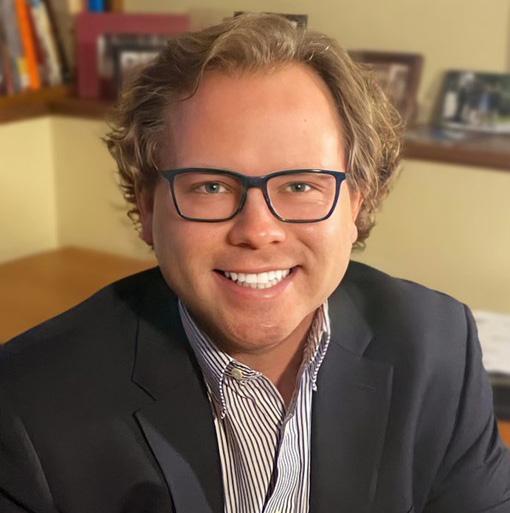
K12 Digest September 2023 25
and offered to sit down at lunchtime with their student to learn more about some of his concerns and to get to know him a bit better.
I was a bit caught off-guard that the parents dismissed this idea out-of-pocket. They immediately felt that this approach might be too overwhelming. This type of meeting with the Head of School would be intimidating for their child. The parents had no interest whatsoever in my offer to get to know their students a bit better over lunch. But why?
The Stigma of the Principal’s Office
The rebuff made me a bit flustered before I realized that the parent’s reaction likely had little to do with me and everything to do with societal norms. I believe we can all relate to the negative stigma associated with “being sent to the principal’s office.” A quick Google search that begins with the phrase “getting sent to the…” will auto-populate with, “...principal’s office.” And in what should come as a shock to no one, my Google search produced results that reinforced that being sent to the principal’s office is not a good thing. That same Google search brought me to a website that outlines the steps one should take in order to “Survive a Trip to the Principal’s Office,” which includes, “remaining calm, breathing slowly and deeply, getting your facts in order, and don’t focus on the punishment.”
One of the most intimidating barriers in a school is that of the Head of School’s office door. Before a principal or Head of School even steps foot into their office, there is a negative association with physically being in that space. At the same time, principals are charged with creating a safe school and
K12 Digest September 2023 26
Countless career and consulting resources extol the virtues of team lunches and many of us likely agree
setting an inclusive culture that fosters a sense of belongingness. With such an “othering” social construct often inherently assigned to the principal’s office, Principals are dealt a challenging hand from which to build a community of belongingness.
Belongingness
The Principal’s office has been tainted by popular culture and by popular practice. Despite this reality, Heads of Schools are charged with building a school culture that supports and affirms a sense of belongingness from that same office.
Building a school culture that fosters belongingness is a daunting task. Heads of Schools and Principals the world over are charged with leading for belongingness and this responsibility rightly rests in the Principal or Head of School. And while that may seem to make perfect sense, the reality is that the deck is stacked against Principals in this regard. If Heads of School hope to foster a sense of belonging in their school, they will need to work overtime to tackle the socially normed negative association with the very desk that they sit at.
The Power of Networking
Like me, many of you likely already subscribe to the power of networking in building relationships, collegiality, and trust. Networking is an important component of career advancement, and research has shown that getting lunch or dinner with a colleague improves relationships and boosts productivity. Networking, after all, helps us to feel more connected. Networking fosters relationships. Networking builds belongingness.
Countless career and consulting resources extol the virtues of team lunches and many of us likely agree. The Harvard Business Review recently cited a “mountain of research shows that professional networks lead to more job and business opportunities, broader and deeper knowledge, improved capacity to innovate, faster advancement, and greater status and authority,” highlighting that, “building and nurturing professional relationships also improves the quality of work and increases job satisfaction.”
Let’s face it: breaking bread together breaks down barriers. If getting together for a meal is accepted as the best career practice, why wouldn’t the same hold true as the best educational practice? It has been for me this school year.
Let’s Do Lunch
After the meeting with my concerned parents had wrapped up and my initial offer to chat with their child was rebuffed, we brainstormed that perhaps a conversation during the lunch period with him and some friends may make more sense. I agreed to reach out to the teacher to set this up and I shared with the teacher that I would be joining a small group from the teacher’s class for lunch that day.
Our lunch together in the Head of School’s office that day was a blast. The students laughed and told jokes and I sat back and generally offered a comment or quip when it made sense but otherwise simply enjoyed the company. On the way out to recess at the end of the lunch period, the students asked if they could come back again next week. I assured them that they could come back for lunch any
K12 Digest September 2023 27
time and soon students in other classes began to take notice of this group of girls laughing over lunch in my office and asked if they could join me for lunch, as well. As other groups of students began to join me for lunch, I couldn’t help but notice how many of them, regardless of age or grade level, remarked, “I have never been to the principal’s office before” with some tint of disbelief in their voice or some silly and light-hearted variation of, “I can’t wait to tell my parents I was in the principal’s office today!”
As those comments have fallen away, I have been overjoyed with how much our students look forward to our quick little twenty-minute lunch sessions together in the

principal’s office. It has been an incredibly easy commitment and a time I look forward to every day. This small investment of time has led to huge gains in personal relationships with students and increased authenticity and credibility with parents. I have invested the time in networking with my students over a meal, and guess what? Breaking bread together builds belongingness.
At this stage of the school year, whether it is the entire first grade, just some of the girls from fourth, or perhaps all of the boys from third, I haven’t spent lunch alone in months, and my lunch period is booking out with students two weeks in advance. If you are interested in learning more about breaking bread for belongingness, let’s do lunch!
K12 Digest September 2023 28
If getting together for a meal is accepted as the best career practice, why wouldn’t the same hold true as the best educational practice? It has been for me this school year

PHOEBE A. WASFY
PRINCIPAL, PHILOPATEER CHRISTIAN COLLEGE
Nurturing the Next Generation of Leaders
Phoebe A. Wasfy is a multi-awardwinning educational leader and experienced board member with a demonstrated history of working in the education management industry. She is the principal at Philopateer Christian College (PCC), one of the fastest-growing private schools in Canada. Her love for academia and active involvement in the field has earned her multiple prestigious awards and accolades, including the Arab Women of Excellence Award in Academia, Woman of Inspiration: Vision Builder Award, and Most Inspirational Woman of the Year. Recently, Phoebe became the first Canadian Egyptian to be awarded presidential recognition by the
Egyptian President, Abdelfatah El-Sisi, for her role in Educational reform and for being chosen in Canada as one of 100 women of inspiration.
In addition to her principalship duties, Phoebe is an Adjunct Faculty for the Youth Ministry Certification Program (YMCP) offered by the Canadian Coptic Center in affiliation with Youth Train, New Zealand. She is also an active member of the Ontario College of Teachers (OCT) and the Ontario Principals Council (OPC). A selfconfessed-passionate teacher, Phoebe’s boundless enthusiasm and commitment to nurturing the minds of the next generation of leaders is infectious. She is an educator who imparts knowledge by understanding the needs of her students, even
K12 Digest September 2023 30

K12 Digest September 2023 31
as she continues to kindle a sense of curiosity, critical thinking, and personal growth in them. With her genuine belief in their potential, Phoebe empowers her students to soar to new heights and become the architects of a brighter future.

A journey from a Passionate Teacher to a Visionary Leader
Phoebe was born in Alexandria, Egypt, and immigrated to North America at the
age of
nine. Growing up, she was inspired by her maternal grandmother, Matilda Gobran, who worked as a teacher in Egypt from the 1950s until her retirement in the early 80s. Mrs. Matilda’s students still speak of her today and remember her role

K12 Digest September 2023 32
Established in 1999, Philopateer Christian College is the first private school in North America founded by the Coptic Egyptian community and open to all students. It has received the title “Best Private School” in the City of Mississauga for four consecutive years

in their lives. For Phoebe, her grandmother’s impact on the lives of her students fascinated her. From a young age, Phoebe wanted to become a teacher herself. She graduated with a Bachelor of Arts (BA) in History and Religious Studies (University of Toronto 2002) and completed her Professional Program in Education (D’Youville College, New York, USA 2004).
Finally turning her dream into reality, Phoebe began her career as a teacher at PCC in 2005. Then on, she was a force to be reckoned with; she pursued her passion, inspired students, motivated colleagues, identified existing lacunae in educational reforms, and created new avenues for learning. A true educational leader in every sense. In 2014, Phoebe took on the role of Principal at PCC.
Philopateer Christian College: Preparing Well-Rounded Leaders for Tomorrow
Established in 1999, Philopateer Christian College is the first private school in North America founded by the Coptic Egyptian community and open to all students. It has received the title “Best Private School” in the City of Mississauga for four consecutive years.
PCC’s mission is to educate and empower young people, transforming them into individuals whose spiritual, academic, and physical attributes complement each other. Here, students are empowered to believe in and develop their Godgiven talents in the right environment, guided by highly qualified teachers.
Roles and Responsibilities
Phoebe’s primary responsibility as a school principal is leading all members of the school team to ensure the students’ success. Her primary goal is to ascertain that the students are groomed into
K12 Digest September 2023 33
well-rounded young individuals ready to embark on life’s journey and impact the world positively in all their endeavors. She aspires to use the model she has created with her team at PCC over the past 25 years and help reform education worldwide.

Overcoming Challenges
One of Phoebe’s biggest challenges is creating and maintaining a balanced educational environment that helps students, teachers, and families grow and impact the world. She admits to having certain times when this vision gets hindered by the staff who are not on the same page or feel that curriculum is the only important part of the school life that they can be responsible for. Parents who

K12 Digest September 2023 34
Phoebe’s primary goal is to ascertain that the students are groomed into well-rounded young individuals ready to embark on life’s journey and impact the world positively in all their endeavors
are not involved or overly involved are another challenge. Despite these challenges and many more, what truly matters to Phoebe are PCC’s students, their learning journeys, and their bright futures. Under Phoebe’s leadership, PCC remains equipped in every way to overcome challenges and stay true to its values, mission, and vision.
Staying Updated with the Education Trends
As one of the fastest-growing private schools in Canada, PCC has developed a system to ensure its curriculum remains relevant with the changing times. Phoebe mentions, “We have a school portal through which teachers upload all documents, assessments, attendance, explanations, presentations, grades, etc., which altogether helps the student, parents, and school stay together to ensure that accountability is formed. In addition, on a monthly basis, a long-range plan is created by the teachers and submitted to the administration to help the teachers and administration work together
to ensure the covering of the curriculum. For elementary schools, teachers provide a week at a glance to help keep all parties informed.
Integrating Technology into Educational Practices
During the pandemic and in the midst of the chaos, PCC took an extremely brave step. It created a fully online high school platform and successfully recruited students from across the globe. Phoebe considers technology to be a vital part of the classroom and something that keeps them as educators on their toes to continue to improve and work with it in a proper and empowering way.
Continuous Professional Development of Teachers
PCC encourages its staff to learn new skills and techniques through additional professional development courses as well as any enrichment programs that help them empower themselves and their students.

K12 Digest September 2023 35
Encouraging Creativity & Innovation in Students
One of the qualities that makes Phoebe an exceptional educational leader is her drive for creativity and innovation. She is someone who is always ready to explore, experiment, and take risks, all the while keeping her students’ learning journeys in mind. She also considers out-of-thebox thinking to be a great way that helps them as a school become unique and empowered in every aspect. Recently, she initiated the first fundraising initiative led by a group of 16 and 17-year-old students for the Egyptian presidential initiative Decent Life. She also initiated Arabic-accredited courses in support of the Egyptian presidential initiative, ‘Etkalem Araby.’
Celebrating & Cherishing Career Milestones
Throughout Phoebe’s remarkable career trajectory, there have been numerous milestones that she is extremely proud of and grateful for. However, one of the most recent experiences that empowered and motivated her was being


K12 Digest September 2023 36
awarded presidential recognition by the Egyptian President, Abdelfatah El-Sisi, for her role in Educational reform and being chosen in Canada as one of 100 women of inspiration.
For Phoebe, this recognition was like a beginning of a new chapter. On June 10th, 2023, she received a call from the Egyptian presidential office, which left her in awe. Phoebe shares, “It started off like any other Saturday, but that phone call was a trigger to something extremely exciting as it was an invitation to an event in Alexandria, Egypt, where I was born to receive an award of recognition from the Egyptian President,

K12 Digest September 2023 37
One of the qualities that makes Phoebe an exceptional educational leader is her drive for creativity and innovation
Abdelfattah El Sisi, for my work in Educational reform as well as being chosen in Canada as one of 100 women of inspiration.” As excited as she was, she remembered having PCC’s graduation ceremony. “It was then I realized that there are priorities in the life of a principal that only a principal would understand,” adds Phoebe.
Soon, Phoebe arranged everything and went to attend and receive this very honoring and humbling recognition. On Thursday, she called and gave her students the principal’s address for 39 minutes over the phone from the Cairo International Airport. The minute she got off the plane, she rushed to the school to see everyone, and to her surprise, she was welcomed by many of the graduating class, who came to see her in their grad hoodies!
The Need for Youth Empowerment
Phoebe is a firm believer that the empowerment of today’s youth is the true preparation for our world tomorrow. Based on her extensive experience and expertise in the field of education, she points out three things that need to be incorporated. These include youth empowerment, youth leadership development, and youth opportunities.
Further shedding light on this issue, Phoebe states that often society forgets to remember that
their today’s youth are going to be the future leaders of tomorrow. When young people are inspired, educated, given opportunities, and raised in an environment where others openly encourage and value their opinions, shaping and developing society becomes better and easier. “In the years I have led our students in raising money for NGOs and doing humanitarian work in different parts of the world, I have seen the power of youth when they are given the opportunity,” reveals Phoebe.
Words of Wisdom
As a seasoned educational leader, Phoebe advises aspiring educators and school leaders to dream big and never let anything stop them from reaching where they want to be. “Let your journey be a light that leads others, and never forget that if it weren’t for the teachers, there would not be any engineers, doctors, or pharmacists,” shares Phoebe.
Roadmap to a Bright Future
Under Phoebe’s leadership, PCC is planning to expand its footprints first through its virtual high school and aspires to open its physical campuses all around the world in the near future.

K12 Digest September 2023 38

Retaining Our New Educators: 7 Questions to Consider
Dr. Amy Vitala, Chief Learning Officer, MobileMind
A concerning time in the world of K-12
I began my teaching career in 2005, and I realize many of us have seen a crisis coming; an impending teacher shortage is not a novel concern. However, after the last couple of years, those of us who have been around for a while keep saying the same thing - I’ve never seen it thi s bad.
Districts across the country are digging for money to offer bonuses and stipends to educators and clambering to attract and retain new teachers. Arizona is exploring an avenue for college students to lead K12 classrooms, and Florida has launched a program to recruit military veterans to begin their teaching careers. Schools in Texas districts have launched alternative preparation tracks for paraprofessionals and Georgia is asking retired educators to return to the classroom. A California district has been asking students’ families to rent bedrooms to teachers so teachers
K12 Digest September 2023 40
INDUSTRY PERSPECTIVE
Dr. Amy Vitala is the Chief Learning Officer at MobileMind. She is a former high school teacher, district professional learning specialist, and assistant professor of instructional technology. With eighteen years of experience in education, Amy is passionate about professional learning, educator satisfaction, and teacher wellness. She earned her doctorate in Teacher Leadership in 2016 and has spent the last decade working with educational leaders across the U.S. to empower educators through meaningful professional growth opportunities.

K12 Digest September 2023 41
can afford to live in the school district. K-12 education is in crisis, and states are getting creative in order to accommodate students as teachers are leaving in droves.
The data is screaming at us
Teachers report a state of greater stress and dissatisfaction than ever. They understandingly want improved working environments and increased support for the challenging work they’re doing. Over half a million educators have bailed since the beginning of the pandemic. In the spring of 2022 there were 380,000 open jobs in K-12 schools, the highest reported number of openings overall in the past decade (Edweek.)
Nearly half of K-12 educators leave the classroom in the first few years. New teachers are 250% more likely to quit than tenured educators. Those who have earned teacher certification through alternative preparatory programs? The chances of leaving increase even more (Learning Policy Institute.) Therefore, we should pay close attention to the fact that a tremendous number of new teachers have entered the classroom, many of whom have gone through (or are currently enrolled in) alternative preparation programs. Much of the attrition data we have as educational leaders was reported before the pandemic, and we are just now beginning to gather solid data regarding the impact these past few years have had on educator attrition and student achievement.
What we do have is research demonstrating that current teaching professionals are very dissatisfied in an industry that was already strained for employees. Only 30% of educators now report satisfaction in their current

positions, and over half (55%) are considering leaving the profession earlier than planned (We Are Teachers.) Even more concerning is the fact that this number is double that of prepandemic reporting. Twice as many teachers are considering leaving now than before the pandemic (governing.com.) Thankfully, several studies on teacher attrition and retention offer insight and hope.
Why do teachers leave?
In order to address the issue of teacher attrition and strive for retention, we must first understand the root cause; why are teachers leaving in droves?
First, most of us became teachers due to our love of students, our passion for helping children reach their potential, the joy of teaching and learning, among other things. While pay is an obvious and historically common grievance, educators don’t enter the field of K-12 in hopes of becoming a fast millionaire.
As García and Weiss suggest in the fourth article of their five-part teacher shortage report, school climate - or teaching environment - is a factor when it comes to teacher dissatisfaction and attrition. “The teacher shortage is a growing national crisis that needs to be addressed in a comprehensive manner,” said Weiss. “Obviously compensation is a major part of the issue, but improving teaching environments would go a long way toward helping teachers feel more supported.” (Economic Policy Institute)
Half of teachers report not feeling a great deal of support or encouragement, and a whopping 97% of new classroom teachers say they lack the comprehensive support they require (We Are Teachers.) So, nearly all new teachers are claiming they need more support to thrive (or survive) in the K-12 classroom.
In their fifth and final article of their teacher shortage series, García and Weiss reveal that weak professional development experiences
K12 Digest September 2023 43
Nearly half of K-12 educators leave the classroom in the first few years. New teachers are 250% more likely to quit than tenured educators
are partly to blame. Teachers are not satisfied with the professional learning opportunities offered and often report lacking choice in their growth activities. Other complaints among educators have been poor working conditions, lack of encouragement and resources, insufficient collaboration with colleagues, and low support from administration.
What do we do now?
We know that educators are the number one influence on student achievement in schools and, therefore, high teacher attrition rates can harm student achievement. Now that we have an understanding of the root causes of educator dissatisfaction and attrition, we can aim to train and retain quality classroom teachers and support staff. With so many new educators in the field, we must make intentional, sustainable shifts in order to combat the dismal attrition rates. So, what can we do?
Of course, teachers are undercompensated. This is an issue over which many leaders have zero control. And, as mentioned above, teachers don’t enter the field hoping to get rich quick. Therefore, our time as educational leaders is best spent focusing on what we can control, such as the experience teachers have when they’re in our buildings.
When assigned mentors in their first year, teachers are much more likely to return to the classroom the following year. Additionally, new teachers who are provided with the resources and support they need, as well as encouragement and positive working conditions, are more satisfied overall and more likely to remain in their positions.
In the fifth and final article of their five-part teacher shortage report, García and Weiss examine “early career supports, ongoing professional development, and opportunities for cooperation
and influence” among K-12 educators. They conclude that intensive early-career support and ongoing professional development influences teacher retention. They state that there is “clear room to improve the system of professional supports that play a role in teacher retention and expand the knowledge base of the teaching workforce.” (Economic Policy Institute.)
When new educators receive mentoring, opportunities for collaboration, and needed resources, first-year turnover is cut by more than half (We Are Teachers.) A Learning Policy Institute supports the finding that training plays a critical role in job satisfaction and that new teachers who feel supported and belong to a strong network can help a great deal. Therefore, we need to create a positive school culture that includes engaging, meaningful growth opportunities for mentoring, collaboration, and coaching.
Supporting New Hires in 2023: 7 Questions to Consider
● What are the resources and intensive early supports we have in place for our new teachers?
● Are there opportunities to survey new and early-career educators in order to better understand their needs?
● Are new teachers receiving meaningful PD, coaching, and mentorship?
● Do new (and veteran) teachers have access to sustained professional development?
● What are some ways we can offer educators voice and choice in their professional learning opportunities?
● Are we creating opportunities for intentional collaboration among new hires and colleagues?
● How am I creating a positive and encouraging district and school culture for all educators?
K12 Digest September 2023 44






“School Climate”: What It Is, And Why It Matters
Jérémie Rostan, PreK-12 Service-Learning Coach, Yokohama International School
Culture and climate are certainly related, but also distinct in important ways. As a matter of fact, the concept of organizational climate predates that of organizational culture (Peterson & Fischer, 2004). Building metaphorically on Köppen’s classification, the model below represents school climate as a function of two variables: attitudes towards challenges (“precipitation”) and perception of efficacy (“temperature”), the combination
of which dictates the kind of growth, or “vegetation”, one can expect in different types of a school environment. It also argues that climate may be more actionable than culture as a lever for organizational change.
A school’s culture includes the various constructs that mediate and facilitate the interactions between its members. This includes artifacts, symbols, and conventions, as well as collective assumptions (beliefs) and expectations (norms). A school’s climate, however, is the
K12 Digest September 2023 46
BEST PRACTISES
A school’s culture includes the various constructs that mediate and facilitate the interactions between its members. This includes artifacts, symbols, and conventions, as well as collective assumptions (beliefs) and expectations (norms)
Passionate about education and its philosophy, Jérémie has over 15 years of experience in international schools. His contributions to many publications cover a large variety of topics, from change management to tech integration and student leadership. He will soon be launching Ed Coach, a YouTube channel for teachers and school leaders, and is the incoming High School Instructional and Curriculum Coordinator at the International School of Panama.

aggregate mood of its constituents. The first difference between the two is that, while their culture is unique to each social group, social climates fall under a limited number of categories. Next, being hard to pinpoint, culture can be hard to tackle or leverage. Climate, however, is much more palpable and easier to grasp. It is also more open to change. Just like culture, it consists of
patterns. Yet, while culture is a way of thinking and behaving that is consistent over time, the climate is a way of feeling that is consistent across situations. Culture is by definition resistant to change. This does not mean that it cannot be made to evolve, but creating stability and continuity is one of its very functions. Climate, on the other hand, has no substance of its own:

K12 Digest September 2023 48
To improve their school climate, leaders should be careful not to confuse it with the “weather in the building” on a particular day
it is a by-product of other factors that can (more) easily be acted upon.
Building metaphorically on Köppen’s classification, the diagram below highlights two series of factors dictating school climate--and how it can be influenced.
● “Precipitation” refers to school members’ aggregate attitude towards challenges, which include both existing demands and ongoing changes. Are they understood, i.e., deemed clear and relevant? Are they not only endorsed but also initiated?
● “Temperature” refers to school members’ aggregate sense of efficacy. Are challenges considered manageable? Do people feel like they have the resources, support, relationships, and recognition they need? Do they feel empowered to take responsibility individually and collectively?
As an example, a school where colleagues feel rather unprepared, unsupported, and disempowered to address challenges they do not fully comprehend or espouse has a “Steppe” climate where disengagement reigns. This makes it obvious that the leaders of a school must adapt to its climate for their initiatives to be successful, as climate dictates what can and should be taken action on, when, and how. More precisely, the first steps of a well-thought strategy include assessing the current climate and shaping it as needed. Indeed, school climate is a gauge of how much need and room there is for action. In simple terms, it indicates the level and valence of arousal in the school body, and thus its predisposition to respond to internal and external stimulation. For instance, high levels of negative stress call for pumping the breaks, decreasing challenges, and building efficacy.
Yet, to improve their school climate, leaders should be careful not to confuse it with the “weather in the building” on a particular day. Actions meant to increase morale might have a temporary effect on emotions, but they will not improve the underlying mood unless they address its determinants. Offering a nice breakfast to kick off a day of professional development will certainly make people happy; but it will only affect climate if it is part of a larger effort supporting their sense of recognition, support, and efficacy; and more generally what Antonovsky (1979) called their “sense of coherence”. In the end, the climate is a barometer of trust–the trust that the members of an organization have that they can flourish in its environment. A gesture seen as disingenuine or simply insufficient might thus improve short-term satisfaction all while undermining climate and mood.
Conversely, appropriate “climate action” (if we may call it so) creates the necessary conditions for change initiatives to take root and blossom. Being more actionable and less stable than culture, climate affords opportunities to enact significant change faster and easier. Not that school leaders should consider culture immutable; but climate action will likely be of great help to introduce the fundamental changes needed to make it evolve.
The next questions to address, then, are: how can school leaders assess and address their school climate? What are the most relevant factors and indicators of perceived efficacy and attitude toward challenges? With clear answers in hand, school leaders will be better equipped to achieve their goal: implementing effective changes to ensure their organization adapts to external circumstances and continuously improves the delivery of its mission.
K12 Digest September 2023 49
The Personal Learning Device of the Future
Andrew Pass, Founder & Visionary, A Pass Educational Group, LLC
Anybody who has ever taught in a classroom knows that every student is different. They learn and think in different ways; they have different interests; and, they have had different experiences. Even identical twins have many differences. Teachers cannot possibly individualize instruction for every student. There are simply too many students in a typical classroom for the teacher to know every student well, let alone use that knowledge to tailor learning to individual needs. Therefore, in a typical classroom, all students are expected to do the same thing at the same time. Within the next twenty years, I believe that educational stakeholders have the opportunity to make the learning experience far more individualized.
In the earliest structures of education teachers did not work with groups of twenty five or thirty students at one time. Rather, tutors worked with students or perhaps very small groups. Mass access
K12 Digest September 2023 50
INDUSTRY PERSPECTIVE
Andrew Pass is the founder of A Pass Educational Group, LLC. With 2,400 associates, A Pass works with organizations to develop content. A Pass designs courses, writes assessment questions, correlates instruction to assets, has a world language department, and more. The company works with all levels, from pre-kindergarten to corporate. Under Mr. Pass’s leadership, A Pass Educational Group, LLC has grown into a multi-million dollar business.

K12 Digest September 2023 51
to education changed this. Society could certainly not afford to provide a tutor for every student. The present state of teaching and learning began.
Teaching and learning will continue to evolve. Within the remainder of this article, I contemplate one potential teaching and learning format that could exist in twenty years. I will only consider the benefits of this structure, although there are certainly potential challenges as well.
Within twenty years, individualized education will be accessible even within the large class structure. Every student will have their own Personal Learning Device, or PLD. A PLD will have the power of a modern computer but be housed in a wristwatch. Consider it a microsized smartphone. It will be viewed through a Heads Up Display, a virtual screen that appears in front of the user when requested. This tool will accompany each person from cradle, or at least early childhood, to grave. Though this PLD will have many different functions, from gaming to reading to telephone, this article will contemplate its role in formal education.
The PLD will have extensive algorithms that enable it to develop a deep understanding of its student. The PLD will learn how the student learns and how he thinks. Whereas students will use their PLDs for many different things both inside and outside of school, these devices will understand the student’s particular interests and the experiences he has had over his lifetime. Did the student watch the Monday night football game in which a player got badly injured? Does the student listen to a particular genre of music more than others? How well did the student sleep the previous night? Who are the student’s best friends? What kinds of things do these friends do together? The PLD will know.
The PLD will have learned the content that students are required to know and skills they should
K12 Digest September 2023 52
Within twenty years, individualized education will be accessible even within the large class structure.
Every student will have their own Personal Learning Device, or PLD
be able to do. Not only will it know this content, but it will also know many different ways in which students could struggle to learn this content and the best ways in which the content could be taught to students. In short, the PLD will possess the same knowledge that a professional teacher should have about content under study.
Long ago, I developed a metaphor to describe the relationship between teacher, student, and content. The student stands on one side of a bridge and the content on the other. The teacher’s responsibility is to serve as the bridge connecting the student and content. By 2043, this metaphor will become obsolete as the Personal Learning Device will function as the teacher.
Each PLD will serve as a customized bridge between content knowledge and skills and its student. All students may still need to master the same knowledge and skills. However, their PLD will present the information in just the right way for the student to learn best for the specific content. The PLD will learn the right fit through watching the student’s responses in the many interactions that the PLD and the student have together.
It is important to note that at times the PLD will push the student out of his comfort zone. For example, imagine a student who accesses information best by reading it. Occasionally, it might be best for the learner to practice accessing information by listening so the PLD would present it in this way.
Multiple PLDs will be able to communicate with each other to engage their different learners in collaborative projects. For example, in studying specific content there might be a great opportunity for learners with different experiences and thinking styles to work together, helping one another analyze the same thing from
different perspectives. The PLDs will be able to structure this learning experience.
These PLDs will enable learning of the future to resemble learning of the past; individual students will learn in ways that best meet their unique needs. But, this begs a question. What will human teachers do?
The answer to this question is that they will play a far more important role in the classroom than they currently do. Teachers will provide the motivation, empathy, encouragement, and love that students will need at different times in the learning journey. They will have the ability to interact with one or a few students at any given time as all students remain engaged. These are components of human relationships that it will be very difficult for computers to replicate.
Even as teachers bring the human element to the classroom, they will be supported in knowing with which students to interact by their own PLD. The teacher’s PLD will interact with the students’ devices to identify the need for specific human interaction even as the student’s PLD guides him through the learning process. However, studentteacher interaction will not be constrained by the dictums of personal learning devices. Rather these interactions will allow for the common interests and common objectives of mentor, in the form of the human teacher, and mentee, or student.
The classroom of the future with its personal learning device will incorporate the individualized learning paths, from the tutor’s classroom of the past. The human teacher will continue to play a fundamentally important role, as through their actions they say to each student, “You matter.” As a result of the collaboration of the PLD, teacher, and student, each student will ideally have better opportunities to grow into healthy, self-fulfilling, contributing members of society.
K12 Digest September 2023 53
How Schools Can Prioritize the Mental Health of Teachers of Color
Wenimo Okoya, Founder & Executive Director, Healing Schools Project
The well-being of teachers plays a vital role in the overall success of students and educational institutions. However, the mental health of educators is often overlooked, leading to increased stress, burnout, and diminished job satisfaction.
An alarming number of teachers, especially teachers of color, are leaving their schools and the field as a result. According to a 2022 national survey, 62% of Black teachers and 59% of Latine teachers said they planned to leave education sooner than expected, compared to 55% of teachers overall.
This is unacceptable.
However, schools continue to be ill-equipped to provide adequate well-being support for educators, especially educators of color. In order to create a thriving learning environment,
K12 Digest September 2023 54
INDUSTRY PERSPECTIVE
Wenimo Okoya is the Founder and Executive Director at Healing Schools Project. She is a passionate practitioner and researcher with experience in program development, training, and delivering guidance around building bridges between health and education in communities of color. She is particularly focused on working with school leaders, teachers, and other caring professionals to promote healing through building trauma sensitive spaces and addressing their own stress and vicarious trauma.

K12 Digest September 2023 55
it is imperative for schools to prioritize and enhance support systems that cater to the unique mental health needs of teachers of color. Below are a few effective strategies and initiatives that schools can implement to better support the mental health of their teaching staff.
Establishing Peer Support Networks:
Creating peer support networks within schools allows teachers to connect with and learn from one another. These networks can serve as safe spaces for teachers to share their experiences, seek advice, and provide emotional support. There is evidence of the impact of peer support as a successful intervention for mental health and healing circles have been shown to significantly improve quality life and mental health symptoms. Healing circles employ a framework of peer support rooted in Black and Indigenous healing. For example, the healing circles my organization hosts are virtual or in person and are run by trained restorative practices facilitators. Participants build a community rooted in shared experiences with teachers of color from their own school or from other schools. During each healing circle, teachers participate in grounding moments (e.g., mindfulness practices), restorative conversations, and collectively envision culture changes in their schools. Between sessions, we provide self-paced healing practices to build connection, prevent burnout, and manage stress. By fostering a sense of community and camaraderie, schools can build resilience and reduce feelings of isolation among teachers.
Fostering a Positive School Culture:
A supportive school culture is essential for promoting teacher well-being. By fostering a positive and inclusive environment, schools can create a sense of belonging and strengthen social connections. Encouraging open communication, respect, and collaboration among staff members can help teachers feel supported, seen, and valued. Additionally, implementing mindfulness practices and wellness initiatives, such as regular staff wellness programs and meditation sessions, can help reduce stress and improve mental well-being.
Accessible Mental Health Resources:
Creating culturally responsive and accessible mental health resources within schools ensures that teachers have the support they need. Collaborating with mental health professionals or organizations like the Healing Schools Project, schools can offer on-site counseling services, workshops on stress reduction techniques, and resources for selfcare, facilitated by practitioners who share teachers’ identities. Providing teachers with information about community mental health resources can also be beneficial, ensuring that they have access to external support when needed.
Supporting the mental health of all teachers, particularly those most historically marginalized, is paramount for creating a diverse, healthy and thriving educational environment. By actively investing in the mental health of teachers and teachers of color, schools can create a sustainable and supportive environment where both educators and students can thrive.
K12 Digest September 2023 56























































































